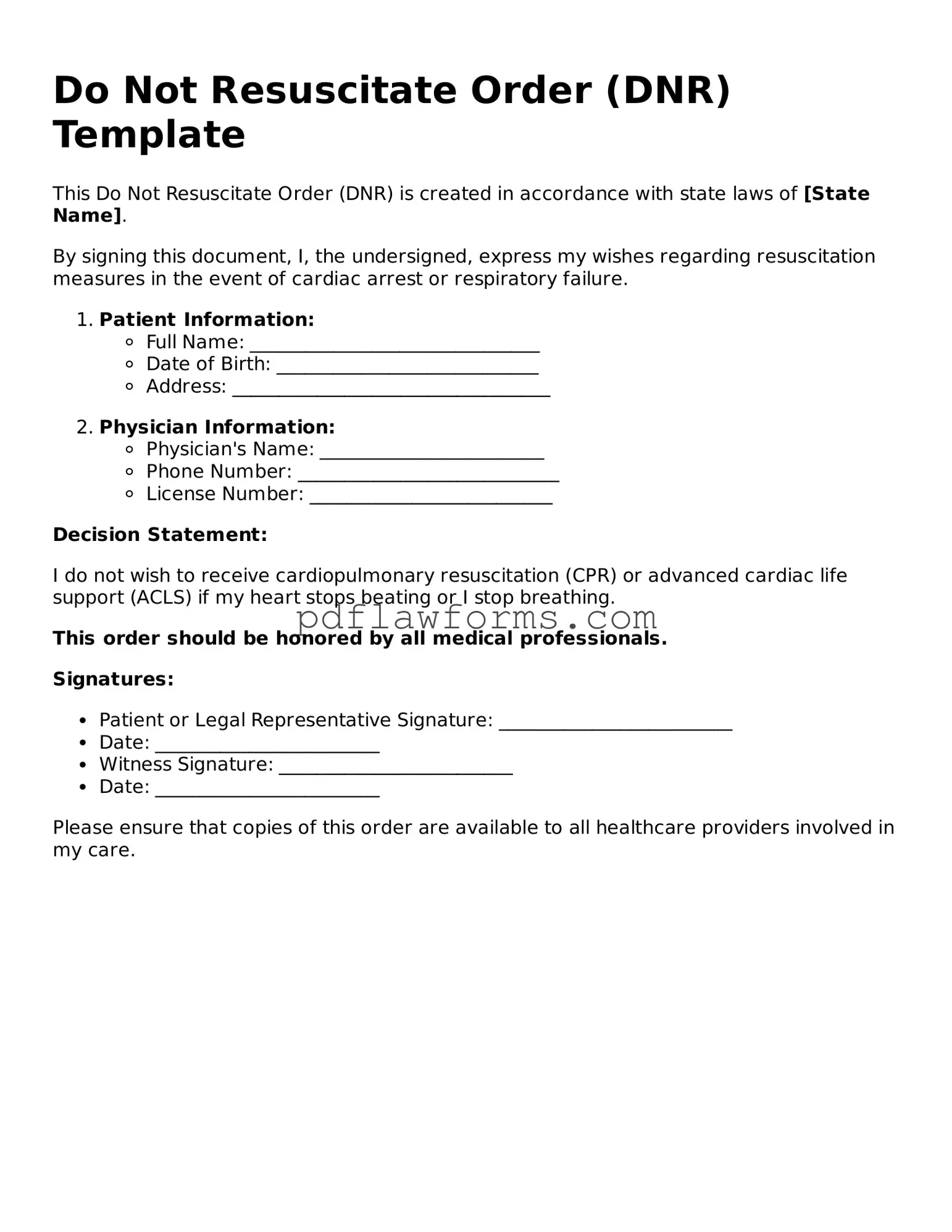Filling out a Do Not Resuscitate (DNR) Order form can be a critical decision for individuals and their families. However, several common mistakes can occur during this process. Understanding these errors can help ensure that the form accurately reflects the individual's wishes.
One frequent mistake is not discussing the DNR order with family members or healthcare providers. Open communication is essential. Without it, loved ones may be unaware of the individual's preferences, leading to confusion or conflict during a medical emergency.
Another error involves not clearly stating the patient's wishes. The language used on the form should be straightforward and unambiguous. If the instructions are vague, medical personnel may not understand the intent, potentially leading to unwanted resuscitation efforts.
People sometimes forget to sign and date the DNR form. A signature is crucial for the document to be considered valid. Without it, healthcare providers may not recognize the order, which can result in unintended resuscitation.
Failing to keep the DNR order accessible is another common oversight. The document should be stored in a location where it can be easily found in an emergency. This ensures that medical staff can quickly locate the order when needed.
Additionally, individuals may neglect to update the DNR order after significant life changes. Changes in health status, preferences, or family dynamics can impact the decision. Regularly reviewing and revising the document is essential to ensure it remains aligned with current wishes.
Lastly, some people may not understand the implications of a DNR order. It is important to recognize that a DNR does not mean no medical care will be provided. Instead, it specifies that resuscitation efforts should not be made in the event of cardiac or respiratory arrest. Clarity about this distinction can prevent misunderstandings and ensure that the patient's overall care aligns with their values.
